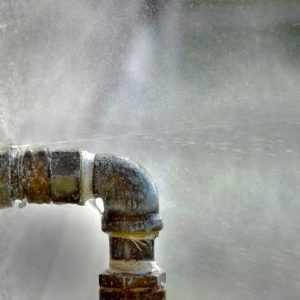Coming into the winter season, Aviva have published a risk management solutions guide for its commercial clients that describes the necessary steps to prevent and minimise the impact of water damage incidents. After all, reducing the risk of damage to your property will avoid both insured and uninsured losses, interruption to your business, supply chain and profitability, and increased insurance costs in the future. 
At Aviva, water leaks are the highest frequency property claim, accounting for approximately a third of all claims by value. So knowing what to do in the event of a water leak can ensure you are prepared and can help mitigate the damage. Even better, carrying out simple checks, ensuring good accessibility to your plumbing and isolation points, being proactive with your maintenance and understanding available leak detection technology, can help prevent incidents altogether.
Susceptible Properties
Any building that contains plumbing, waste systems, heating and cooling systems, fixed water installations, etc. can suffer damage from escape of water, however, some are considered particularly susceptible:
- commercial properties with sensitive areas, such as IT suites, control rooms, utility rooms, electrical risers, etc.
- hotels, residential flats, student accommodation and shared houses
- unoccupied properties and holiday lettings
- older properties or older installations, i.e. those over 20 years old.
Changes to building practices and environmental factors have led to the phasing out of copper pipework in favour of plastic pipework, which features compression and push-fit joints rather than soldered joints. These types of fittings are particularly prone to failure if they have not been installed correctly, or can move, or are impacted, etc.
Identifying Potential Leak/Fluid Sources
Identifying potential leaks or fluid sources is the first part of understanding your risk and should form part of the formal risk assessment. Leaks and damage arising from escape of water/fluid can occur from a number of sources, such as:
- domestic appliances, such as dishwashers, washing machines, ice & beverage machines, etc.
- water carrying pipes, caused by corrosion, freezing, joint failure, poor maintenance, physical damage, etc.
- hot water heaters and cylinders
- overflowing of sinks, baths, water storage and expansion tanks
- blocked or overtaxed roof and underground drains
- pressurised water sources in high rise buildings
- air conditioning unit’s condensate drainage system.
Prevention & Control
Various precautions can be taken which will reduce the risk of escape of water/fluid occurring and limit the extent of damage which may occur in the event of a leak, including:
- Infrastructure protection, e.g. regular inspection and maintenance, readily accessible incoming water mains stop valve, etc.
- Winter/cold weather protection, e.g. pre-winter checks, adequate lagging & heat, risk of ice forming on guttering, etc.
- Operational controls: ensure that any goods susceptible to water ingress, electrical and any high risk equipment are raised from the floor
- Periods of unoccupancy: install water flow detection, isolate equipment and drain down systems
- Automatic leak detection devices: remote monitoring is strongly recommended
- Management controls: drawings of the system(s), site emergency plan and list of emergency contractors should be readily available and accessible, and provided to tenants, managing agents, etc.
Post Escape Emergency Response
Where safe to do so, the following measures are recommended:
- Turn off the water supply to the building or part(s) of the building that is involved.
- Contact emergency contractors who can respond to the incident.
- Isolate the electrical supply to the affected areas but do not touch any electrical equipment which has become wet.
- Turn off heating and hot water systems.
- Drain systems that hold water, including any storage tanks.
- Alert occupants of neighbouring areas/properties if they may be affected, especially those on floors below.
- If water starts to seep through ceilings, place a bucket below the leak, and if necessary and only if safe to do so, pierce any areas holding water with a broom handle or similar to release the water to prevent ceiling collapse.
- If pipes have frozen, defrost them slowly with hot water bottles or warm air blowers – do not use naked flames, such as blow torches.
- Doors and lot hatches should be left open to allow warm air to circulate to upper floors and within loft areas.
- If necessary, move any high risk items that could be impacted to a safe and secure area.
- Notify your landlord, managing agent or anyone else who is responsible for the building.
- Notify your insurer or your insurance broker as soon as possible.
If you have any questions on this topic, would like a quotation for Business Interruption and Property Damage insurance for your business, or want to discuss your existing insurance arrangements, please call us on 049-4332944, e-mail info@martininsurance.ie or complete our online enquiry form.
Disclaimer: The material contained is this article is for general information purposes only and does not constitute professional advice.


